#hermetica
Text
If you’ve tried to study alchemy, you’ve probably come across the name “Hermes Trismegistus.” Hermes the Thrice-Great is often referred to as the mythical sage who invented everything from alchemy to mathematics to Judaism. There is no evidence he ever existed, but the legend of Hermes Trismegistus is the mortar holding together the bricks of western alchemy.
As you read the rest of this book, Hermeticism will come up a lot. Occultists love Hermeticism because it is a powerful tool for syncretizing disparate spiritual traditions. In short, it is religious duct tape.
First, it gave us a legendary sage that supposedly all knowledge came from. A common problem with religions is that they disagree. Hermeticism says that if two theologies have a similar idea, that’s because they both came from Trismegistus. Additionally, the history of alchemy and magic is complicated. By saying “it all comes from Trismegistus” you save quite a bit of time. Because of this, Hermeticism serves as a scaffolding for the otherwise chaotic history of western esoterica.
Talking about Hermetica today on patreon!
1K notes
·
View notes
Photo

Hermetica: The Ancient Greek and Latin Writings which contain Religious or Philosophic Teachings ascribed to Hermes Trismegistus
#hermetica#corpus hermeticum#hermeticism#hermetic philosophy#egyptian philosophy#greek philosophy#hermes#hermes trismegistus#mercurius#thoth#ascelipius#hellenistic#late antiquity#library of alexandria#greco-roman egypt#emerald tablet#gnosis#gnosticism
183 notes
·
View notes
Text
How I Structure My Hermetic Praxis with the Help of the Preces Templi PDF
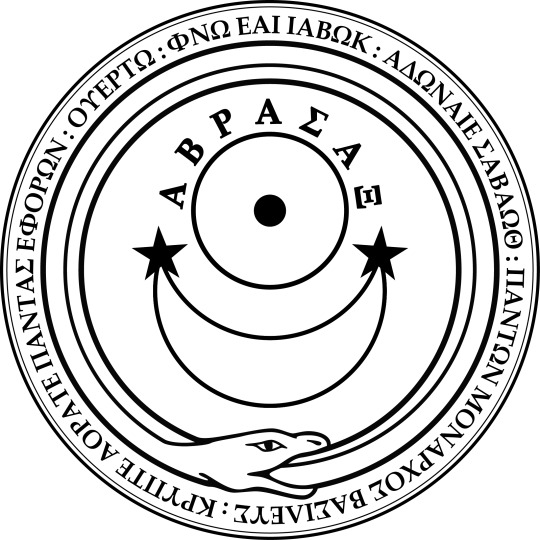
Now, without trying to tackle and unpack what a “Hermetic praxis” entails or means philosophically or scholarly, we are going to briefly summarize that it is a practice that includes adherence to the teachings of the writings attributed to Hermes [Trismegistos], along with an adherence to the teachings found in such tractates such as the Greek Magical Papyri (PGM) and Picatrix, and many other magical/astrological treatises. Does one have to use the Picatrix or PGM? No of course not. This is just what my Hermetic praxis looks like. Nothing in here is “canon” or dogma. I am just expressing how the Preces Templi e-book by the incredible Sam Block, aka “Polyphanes” helped me restructure my praxis with a strong adherence to the teachings found in the Corpus Hermeticum (CH), Latin Asclepius (AH), and the Definitions From Hermes to Asclepius (DH), to name a few. A link to his Ko-Fi shop will be at the bottom of the page. I encourage anyone who is looking to structure a “Hermetic praxis” with an adherence to classical “Hermetic” texts and treatise to investigate his shop and also come join us in the HhoL (Hermetic House of Life) discord server! These things I practice are mingled and co-exist with an already daily devotion to the gods of Egypt and Greece, which that devotion can be deemed “Hermetic,” most certainly, but not all the time. Alright, now that I’ve introduced what I am talking about. Let’s get into what I do upon arrival, upon waking up I mean.
The first words out of my mouth upon my arrival will be taken from Chapter 2.2.1 from the e-book “Opening Supplication.” I find that a quick little praise or thanks to The All helps keep me focused and more mindful of my day-to-day interactions with others. It also reminds me to give thanks to the gods before I embark on any task, mundane or spiritual. Allowing me to start and complete every task with Divine influence. If I don’t say this upon awakening from my slumber, I usually say this little maxim to Amun: “Awake being rested, may you awake in peace! May Amun awake in life and peace! May NN (I insert my magical pseudonym here) awake in peace!”
After washing and stretching, I’ll say the prayer from CH I. 31-32, which Polyphanes lists as the Triple Trisagion, in Chapter 2.3. A beautiful prayer that closes the first chapter of the Corpus Hermeticum. I personally don’t use his translation, simply out of practicality reasons, as it is easier to just grab my Hermetica translated by Brian Copenhaver than to open up my PDF file of the Preces Templi. Though if I’m on the go, running late, or whatever it may be, the Preces Templi e-book is always a few taps away for me to show my devotion just on the go!
Next, after the closing prayer from CH I. 31-32, I say the prayer in the back of book 2 of the Ars Paulina to my Holy Guardian Angel. Now praying to your personal daimon, HGA, natal genius, whatever you want to call it isn’t found in the Preces Templi, nor found in any philosophical Hermetica. A method to get in contact with your “Personal genius” is found in the Picatrix, an astrological treatise attributed to Hermes. To me, this suggests the importance of getting in touch with your personal daimon for a Hermetic praxis.
Moving on to when I’ll come home from school or work. I’ll meditate informally (meaning without my ritual attire) on the sayings or maxims from chapter 3.2 of the Preces Templi e-book. These sayings are also employed when getting things ready for a theurgical invocation or my daily silent prayer for the god I am honoring that day.
Some of my favorites from Chapter 3.2 of the e-book are from the Stobaean fragments: SH 1.2 says, “What cannot be expressed—this is God.” CH XII.23: “There is but one religion of god, and that is not be evil.” Lastly, from CH XVI.11: “Irreverence is mankind's greatest evil against the gods.” Such beautiful work Polyphanes has done organizing all these sayings from various Hermeticas into practical guides so that these can be recited or simply meditated on. The choice is yours to decide what to do with these organizations’ young mages!
So, imagine that today is Thursday. On Thursdays, I honor Asklepios. Along with the Orphic Hymn I sing to Asklepios in the mornings, later in the day, I’ll use chapter 7.22 from the e-book: “Hymn to Asklepios.” Tuesdays are for Anpu, so sometimes I may use 7.20: “The Hymn to Anubis” instead of some handwritten hymns for the wonderous Foremost of the Western gods! On Fridays, I perform the Israeli Regardie Hymn to Isis, and then I’ll use chapter 7.12 from the e-book titled: “The Hymn to Eros” to honor both Isis and Eros on Fridays. All these hymns found in chapter 7 of the e-book can be referenced to the Greek Magical Papyri.
I use this e-book almost like a springboard to help further my studies and structure my devotional praxis. These are prayers and hymns in this e-book. No concrete “rituals” or anything of that nature. With some homework, though, one can use the e-book to bring some fundamental structure and ritualize what is here into your own practice! I don’t use everything here; I’m keen on constructing my hymns and theurgical invocations. But it’s a tremendous and invaluable resource that is super cheap, and it has greatly aided my structuring of my own ritual praxis. I love this e-book, and I’m sure if you follow and enjoy my musings, you’ll enjoy and find the fruits within the Preces Templi e-book.
https://kofi.com/s/751c99dfa9
https://digitalambler.com/2020/12/09/new-ebook-for-sale-preces-templi/
#hermes#occult#hermeticism#hermes trismegistus#hermetic philosophy#hermetica#prayer#hymn#ritual#hellenic polytheism#kemetic polytheism#greek magical papyri
56 notes
·
View notes
Text
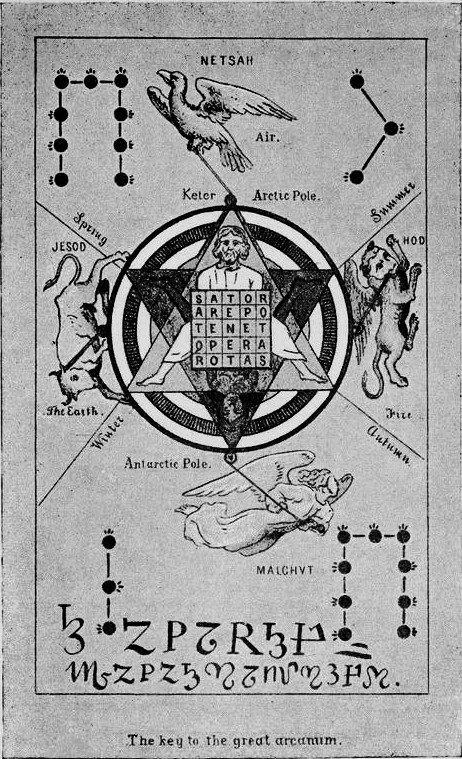
Key of the Tarot: there are four suits, wands, caps, swords, coins or pentacles, corresponding to the four cardinal points of Heaven, and the four living creatures or symbolic signs and numbers and letters formed in a circle; then the seven planetary signs, with the indication of their repetition signified by the three colours, to symbolize the natural world, the human world and the divine world, whose hieroglyphic emblems compose the twenty-one trumps of our Tarot. In the centre of the ring may be perceived the double triangle forming the Star or Seal of Solomon. It is the religious and metaphysical triad analogous to the natural triad of universal generation in the equilibrated substance. Around the triangle is the cross which divides the circle into four equal parts, and thus the symbols of religion are united to the signs of geometry; faith completes science, and science acknowledge faith. By the aid of this key one can understand the universal symbolism of the ancient world, and note its striking analogies with our dogmas. One will thus recognize that the divine revelation is permanent in nature and humanity.
#key of the tarot#bibliophile#literature#quotes#upload#occult#occult art#occultism#great arcanum#symbols#hermetica#hermetic alchemy#hermetic library#hermetismo#hermetic tarot#tarot#geometry
143 notes
·
View notes
Text

"my true nature is unaffected by circumstance" | elvenfoe
#sharing some of my previous sigils#sigil#sigils#my sigil#occult#hermetica#ritual#witchcraft#witch#sigilcraft#sigil magic#sigilwork#chaos magic#sigil magick#chaos magick#art
28 notes
·
View notes
Photo

From “Greek Enchiridion” c. 1553
#hermetica#hephaestion#snake#illustration#engraving#greek enchiridion#mysticism#symbolism#ex libris mythicus
259 notes
·
View notes
Text
“If then you do not make yourself equal to God, you cannot apprehend God; for like is known by like.
…
Think that for you too nothing is impossible; deem that you too are immortal, and that you are able to grasp all things in your thought, to know every craft and science; find your home in the haunts of every living creature; make yourself higher than all heights and lower than all depths;
…
But if you shut up your soul in your body, and abase yourself, and say “I know nothing, I can do nothing; I am afraid of earth and sea, I cannot mount to heaven; I know not what I was, nor what I shall be,” then what have you to do with God?”
-Hermes Trismegistus, Hermetica
***I don’t think Hermes and Thoth are the same gods, rather they are besties who vibe well and wrote books together.
And maybe Hermes Trismegistus (Hermes Thrice-Great) is not just a fusion/collaboration of two deities, but a trio. A trio of Hermes, Thoth and you. Thrice-great.
They said “If then you do not make yourself equal to God, you cannot apprehend God; for like is known by like.” in the Hermetica.
They already say if you wish to understand the wisdom of them, you need to think yourself as a god as well. For like is known by like. As above, so below, if you will.
Then you can share their wisdom. And be the Hermes Trimegistus.
Kharis Hermes! Dua Thoth! Hail me!
Disclaimer: Just some late night thoughts.
#hermes#thoth#greek mythology#egypt mythology#hermetic#paganism#hellenism#hermetica#hermes trismegistus#alchemy#kemetism
45 notes
·
View notes
Photo
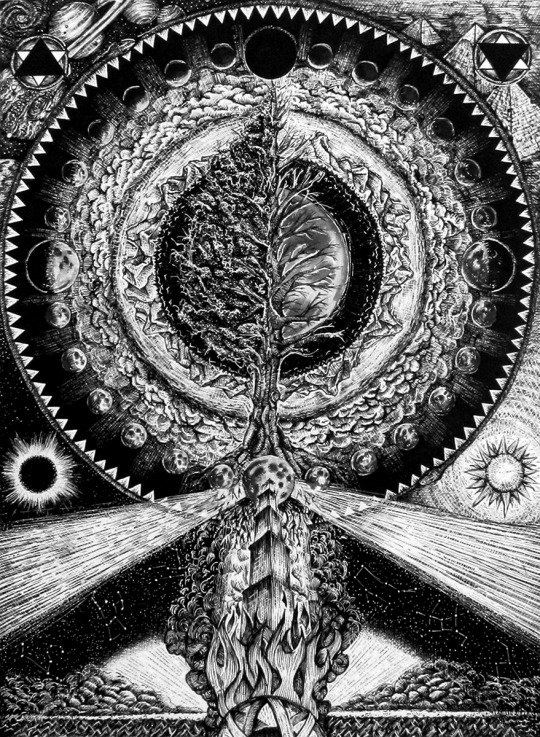
Let me try this again. Not sure I’ve shared this work on here before.
From: http://theprimitiverite.com/portfolio/anima-mundi/
57 notes
·
View notes
Text
Cuando el humano se hunde, siempre busca un responsable.
17 notes
·
View notes
Text

Prevail
21 notes
·
View notes
Text
As for what those Hermetic ideas actually were, we will cover them as they arrive. The important thing to keep in mind is that Hermeticism serves as a kind of scaffolding for alchemical history. Hermeticism touched many different intellectual fields, and had fun mythology about a legendary wizard who was maybe the son of Thoth. No upstanding Byzantine scholar would care if an alchemical text was published by Joe Alexandrian, but an alchemy text published by Legendary Wizard Hermes Trismegistus? Now that has clout.
Hermeticism has one foot in religious philosophy, and the other in natural philosophy. As such, it becomes a bit of an intellectual atom-smasher. If you have some great ideas about god, and some great ideas about how to test the purity of copper, but you just can’t figure out how to combine the two, Hermeticism will be an excellent glue.
Finishing up Alexandrian Alchemy, today on Patreon.
267 notes
·
View notes
Text
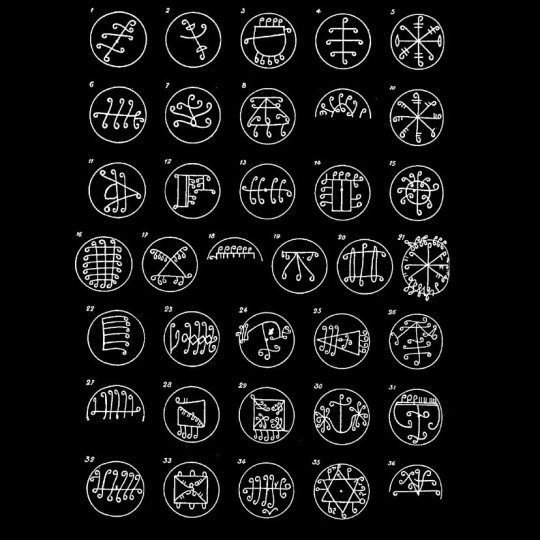
Sigils of the 36 Decans from the Catalogus Codicum Astrologorum Graecorum, a compilation of translations of Greco-Egyptian magical texts on the Decans and their uses.
The names of the Decans as given in the catalogue:
𓇼PARKHÁM
𓇼OUALÁKH
𓇼DELPHAÁ
𓇼ZAKKHÁL
𓇼KHOUNTHÁ
𓇼ANESIOÚM
𓇼PARESKHÁRTI
𓇼HIERASESÊR
𓇼ANASÁM-TETÊKH
𓇼SARKHAÁM-KOMPHES
𓇼TENOÚM-TANLÁKH
𓇼TROUKHÁP-IÁLEM, SAMPÁKH
𓇼APHÁKH-MPEÍTH, PANKHATÁP
𓇼TALANTÍS-KHARKHÁM
𓇼DEROPOÚT
𓇼MENAÍM-KHILLÁ
𓇼MPEÍ-PHOLÁKH
𓇼MARKHEM
𓇼ZÁKH-MEM
𓇼SEPTETÚL
𓇼SELOUÁKHAM
𓇼AMPÁNAN TZÉNGGIKH
𓇼LÁPH-MEÍKH
𓇼ARKHÍMOI-IELOÚPH
𓇼ANASÁM-TERIKHEM
𓇼MAKHRÁM
𓇼KHALKHÊM-IKHÉM
[Capricorn is missing]
𓇼BAZEÍNKH
𓇼KHOUNLIÁKHM
𓇼MAKHILOÚKH
𓇼KAÍN-KHÁM
𓇼POKH-MELLEPH
𓇼SUREM-OLÁKHM
#hermetismo#hermeticism#hermetic philosophy#hermetic library#hermetica#Egyptian decans#decans#decan spirits#star spirits#astrology#astrological magic#hellenistic astrology#ancient astrology#astrology witch#astrologycommunity#traditonal astrology#magicien#amulets#talismans#talismanic#sigil witch#sigil magic#sigil making#sigilcore#sigilwork#sigils#sigilyph#sigil creator#egyptian astrology
51 notes
·
View notes
Text
Poimandres Dialogue & PGM XVIIb. 1-23
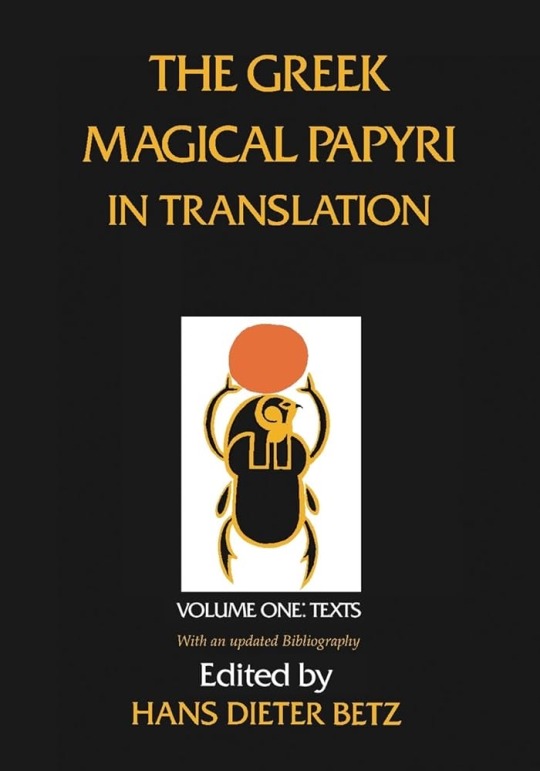
Interesting parallel here, as Hermes Trismégistōs is being taught by Poimandres the elements and the “unreasoning” creatures that spring forth from said elements and in PGM XVIIb which appears to be a simple theurgic hymn to Hermes. In line 15 it states: “You lord it o’er the Elements: fire, air, water and earth.”
Here is the whole hymn as follows:
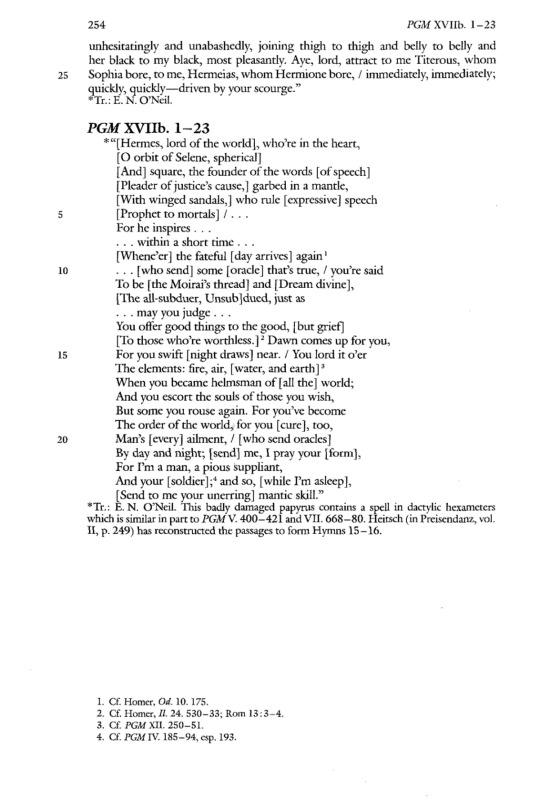
This hymn just seems very similar to CH I. 5 and 11. In paragraph 5 of the Corpus Hermeticum, Hermes Trismégistōs learns of “The fire that was nimble and piercing and active as well…” and the rest of elements that are “stirred to hear by the spiritual word (Logos) that moved upon them.” And in paragraph 11 he learns of the elements air, earth and water and the unreasoning creatures that spring forth from said elements.
What’s interesting is my equation of Hermes as the spiritual word. The divine Logos. Is this Hermes Trismégistōs being taught by Poimandres the nature of Hermes, the Olympian, as Logos and his role in Hermetic creation? Seems like an argument could be made for this. What’s tricky though is who Hermes Trismégistōs is. Cause at times, to me at least, He is Hermes the Olympian and Thoth syncretized, other times he is a divine prophet, but a man no less.

Thoth is also equated in my head canon as the divine Logos, but the name of which god is the Logos of the Poimandres dialogue is not what is important I think. For in both mythologies: Hermes the Olympian is a brandisher of speech, gifting said speech to we mortals and to Pandora, and Thoth is the creator of the hieroglyphs, recorder of all names who enter the Du’at. So, they can both be the Logos, as described in the Poimandres dialogue, i.e. CH I.
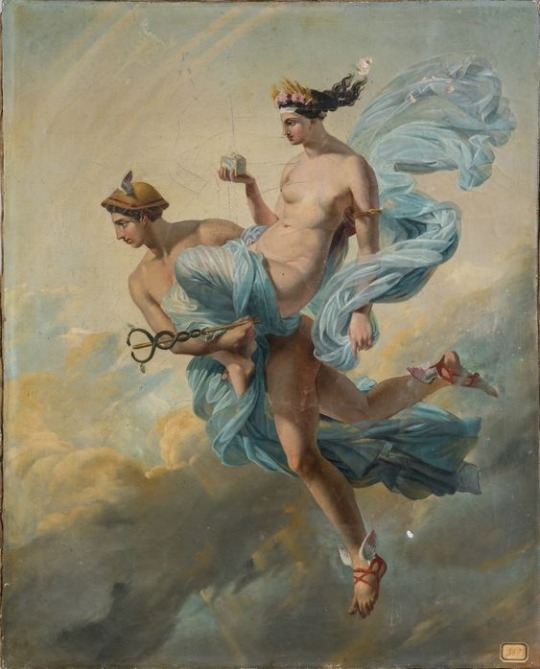
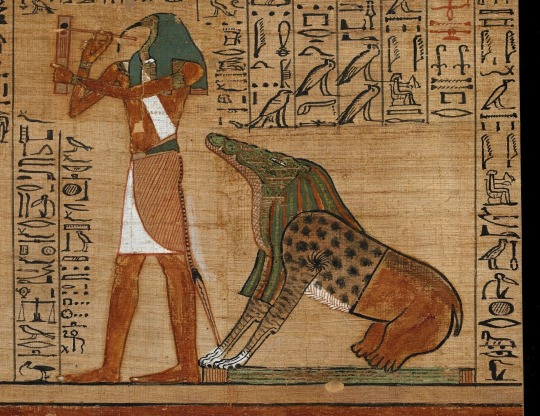
Not really sure where this is going, other than just making an interesting parallel to Hermetic “philosophy” and more practical Hermetic “magic/theurgy”. Anyways —Khaire Hermes!

#hermetic library#hermeticism#philosophy#hermes trismegistus#hermetica#occult#greek magical papyri#hermetic philosophy#hermes#thoth#duat#therugy
13 notes
·
View notes
Text

Chemical Wedding : in alchemy, the joining (coniunctio) of the male
elements fire and air (represented by sulphur) and the female elements
water and earth (represented by argent vive or quicksilver) in
philosophical – mercury – symbolized by gold (King Sol) and silver
(Queen Luna) respectively – in the final phase of the magical opus. This is
the fusion of opposites which produces the Philosopher’s Stone.
#chemical wedding#alchemy#hermetic alchemy#hermetismo#hermetic library#hermetica#conjuction#bibliophile#literature#upload#coniunctio#alchemical#quotes
107 notes
·
View notes
Text
𒁾𒁇𒊏𒀝𒁴
𒁹𒁀𒇷𒎙𒄿𒍠𒃼𒋃𒉘𒊭𒌋𒅗𒁾𒀭𒀝𒌝𒈠𒅅𒉈
𒁹 𒄀𒌈 𒆪𒌦𒉡𒌈𒊭𒌓𒁲𒆪𒌦𒈝
𒈫 𒊭𒅋𒇺𒅖𒌅𒊭𒊭𒊭𒀊𒆷𒎙𒅇𒊭𒊭𒀊𒆷𒎙𒅖𒌅𒊭𒅋𒇺𒋰𒊏𒀀𒌅𒅖𒋼𒉏𒅁𒁍𒍑
𒐈 𒆠𒈠𒄢𒆷𒌈𒅖𒌅𒅖𒋼𒉏
𒐂 𒀜𒁕𒉌𒀭𒌓𒌋𒂼𒉌𒀭𒌍
𒐊 𒂵𒂵𒀸𒅔𒃼𒋛𒋗𒅖𒋛𒄿𒎗𒅁𒌈𒅔𒃼𒋛𒊭𒄿𒁁𒅕
𒑁 𒆠𒈠𒂵𒂵𒉘𒅔𒊭𒌉𒆸𒂊𒁉𒅕𒅔𒂊𒈬𒊌𒂊𒈬𒄄
𒑂 𒅍𒀀𒈾𒀭𒎌𒅖𒌅𒆠𒁴𒌋𒀀𒈾𒊬𒆧𒁴𒊭𒊭𒀊𒆷𒎙𒅇𒅋𒇺𒄿𒉿
#akkadian#ancient languages#babylonian#cuneiform#mesopotamia#semitic languages#assyriology#ancient#emerald tablet#hermeticism#hermetica
18 notes
·
View notes
Photo

From “Geometrie practique” c. 1547
86 notes
·
View notes